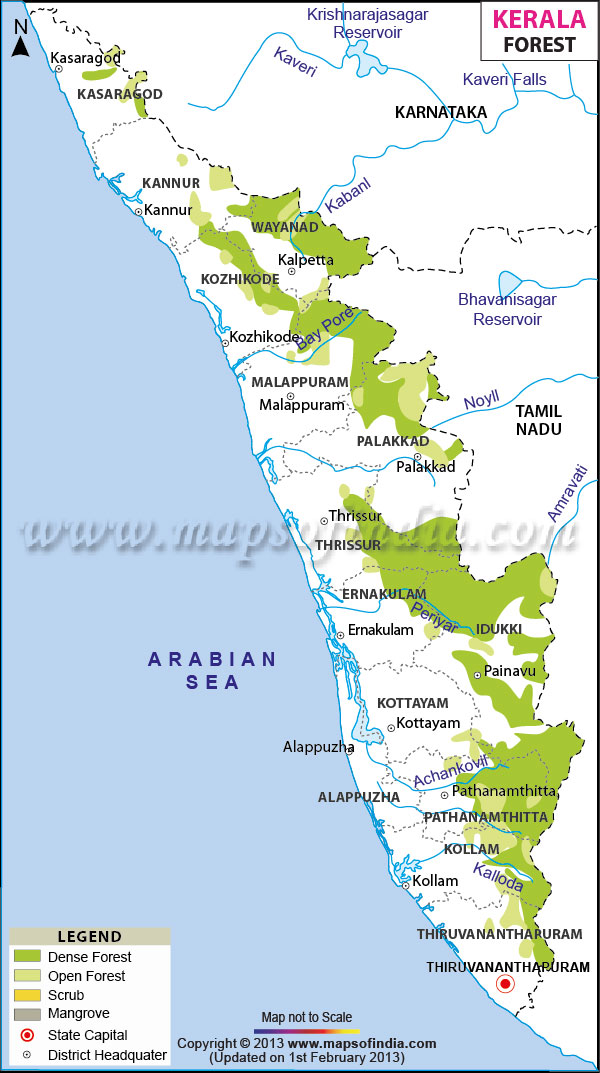Table of contents
The increased area under cultivation, changing cropping patterns, significant increase in the population of animals due to conservation efforts, and movement of livestock and humans in wildlife habitats during odd hours – have all contributed to the rise in human-wildlife conflict incidents.
Why is it in the news again?
Context
Protests have erupted in Wayanad, Kerala after a man was killed by a herd of wild elephants, the third such death in less than a month in the district.
This is the latest in a series of such incidents over the years, and has put the spotlight back on Kerala’s escalating human-wildlife conflict.

Human-Animal Conflict
India: Statistics
- Annual death toll of 400 people
- Damage to thousands of acres of crops
- Unmeasured psychological stress on the affected community
Further, there had been retaliatory killings of several wildlife species. The most ‘problematic’ animals as per reports were elephants, wild boars, tigers, and, leopards. Recent reports mention monkeys and peafowl as well.
Kerala: Statistics
Kerala has a forest cover that approximates to 11,521.813 Sq. km, extending over 29.65% of the total geographical area of the State.
With the drastic increase in human population and the resultant increase in anthropogenic pressures on forest areas, human-wildlife interaction and resultant conflict have seen a sharp rise in the recent past


Reasons for the increase in human-wildlife conflict
Human-wildlife conflict is a threat in almost all forest divisions of Kerala, especially in the northern region.
- Changed cropping patterns.
- Modification of the forest environment.
- Human incursions into traditional migration paths of wild animals.
- Habitat loss and fragmentation and increasing wildlife population.
- Invasive alien species have reduced the availability of food and water.
- Monoculture of species such as eucalyptus and acacia has also adversely affected plant biodiversity.
- Proliferation of conflict issues in areas far removed from forest fringes.

Usually, elephants raid crops because they are more palatable, more nutritious, and have lower secondary defenses than wild browse plants. /hr
We can't clear UPSC for you.
But with our personalised mentor support, you'll be ready to do it yourself.
Recommendations to deal with the Elephant problem
The human-elephant interaction is the result of the pattern of use of available habitats by people and elephants. Protected areas in India are estimated to cover only 22% of elephant habitat. Only a few populations of elephants in India live in continuous habitats, while others live in highly fragmented forests interspersed with a very high human population.
- Creation of physical barriers to prevent animals from reaching the human habitations and crop fields.
- Elephant-proof Trench (EPT): This is the traditional method and has been an old practice in several parts of the country.
- Solar Power Fence (SPF): SPF acts as a psychological barrier but does not provide a long-term solution, especially in areas with habitual crop-raiding elephants.
- Hanging Solar Power Fence (HSPF): This is a modified version of SPF, protected using wires hanging from the mainline, which is kept beyond the reach of elephants.
- Solar power is passed through the wires and when an elephant touches the wires, it gets mild shocks that do not pose any danger to its life.
- Such fences are laid across the forest fringes to prevent the entry of elephants from the woods.
- Bio-fence: The plant Agave, reportedly avoided by elephants, and xerophytes, lemon, chillies, date palm, etc.
- It is proposed in selected areas, where local communities can decide the type of species suitable to that locality.



Trench, Hanging Solar Power Fence, Bio-fence
The barriers will be used judiciously taking a landscape approach so as not to disrupt the natural movement of the animals which is essential to the conservation of the elephants in the landscape.
- Adoption of measures to avoid the interface between humans and wild animals.
- Beehives as a deterrent: Following the success stories in Kenya, the concept of beehive fences has attracted enthusiastic conservationists in some parts of Asia. This was also because of the income expected from the honey and the affordability to small-scale farmers.

- However, this method failed subsequently because the elephants got used to the buzz sound of the bees.
- Translocation of problematic animals.
- Developing infrastructure and human resources for effective mitigation of human-wildlife conflicts.
- Kayyala and Elephant-proof Walls: This is one of the latest trends in Kerala.
- The implementation cost is very high (140 lakhs/km) and the building materials are procured at an environmental cost.
- According to one report, about 9000 cubic feet of granite stone are required for the construction of the 100 m wall.
- Kayyala and Elephant-proof Walls: This is one of the latest trends in Kerala.

- Early-warning Electronic Systems: Early warning systems are presently functional mainly in the Munnar region.
- Use of drones for scaring/monitoring: Elephants seem to keep away because of the buzzing sound the drones make
- The West Bengal Forest Department used a drone in Bankura district to locate and monitor a tusker proclaimed as a rogue.
- In Kerala, a drone was once used in limited locations to locate stray tigers and elephants.

- Radio-collaring of problematic animals.
- Identifying and collaring individual problem animals, receiving GPS locations via satellite or GSM technology, mapping the location on GIS maps, and informing the people who are at risk

- Involving Panchayaths and line departments to assist in conflict management.
- Strengthening people’s participation in the mitigation of human-wildlife conflicts.
- Elephant Information Groups are formed in different areas and information on elephant sightings is communicated to the control room managed by RRT.
- These sightings are forwarded to the concerned area staff and watchers for verification of facts and if found correct, are passed through SMS alerts to all the registered users.
- Elephant Information Groups are formed in different areas and information on elephant sightings is communicated to the control room managed by RRT.
- Improvement of the habitat of animals in the forest including grasslands and waterholes to provide adequate food and water inside the forest itself.
- State government’s new eco-restoration policy.
- The Forest Department is aiming to plant suitable indigenous plants (wild mango, wild gooseberry, and wild jackfruit) in the forest to ensure wild animals’ food security.
- This aims to dissuade them from entering agricultural lands.
- Training, awareness creation, and research to reduce the conflict.
- Providing ex-gratia, crop insurance, life insurance, and ex-gratia to the victims of wildlife damage.
From 2011 to 2021 elephants have been responsible for 190 human deaths in Kerala. Elephants are also responsible for the deaths of cattle.

The success of any strategy requires inter-departmental cooperation. However, understanding how people living in or near conflict-prone areas use natural resources, and how they make decisions about current and future resource use, remain key to addressing underlying drivers of human-wildlife conflict and their spatial variation.
A comprehensive wildlife management methodology that integrates the social and biological sciences and maximizes community participation is the need of the hour to reduce such conflict.
Previous Post